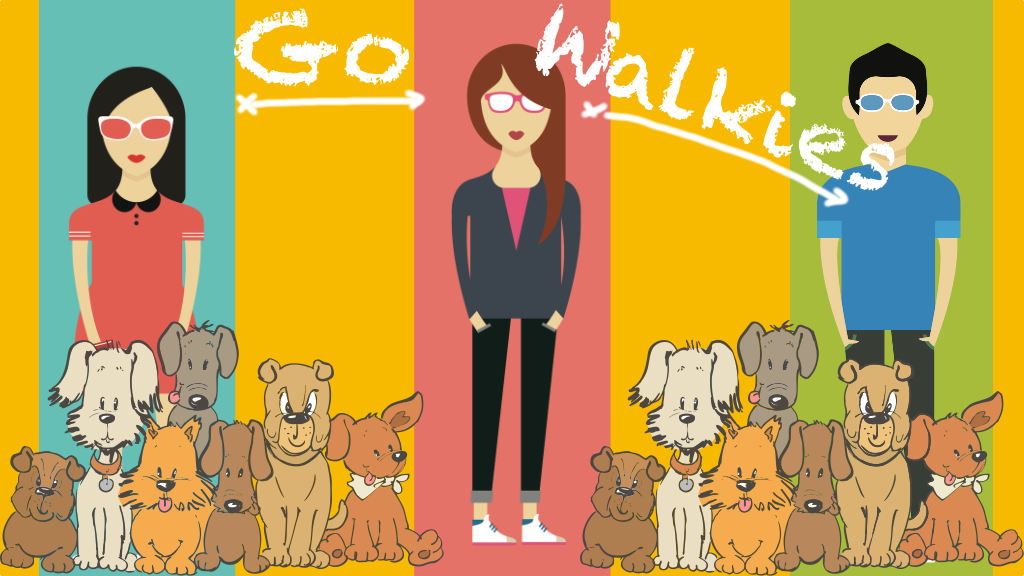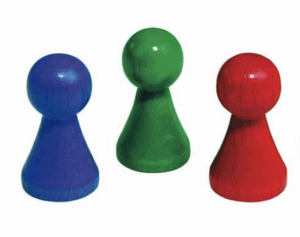Define the goals of your data gathering session
The goal of our data gathering session is to find out the needs of our user group by using an interview for qualitative answers and a questionnaire for quantitative answers. Both are supposed to give answers to the questions which approach the users take to find recipes, which difficulties they experience and if the potential users would cook more if the provided features of the cooking app would fit the users needs better.
In addition, we want to find answers to the throwaway behavior and how it might be affected through our app idea.
Based on your goal, derive the kind of people you want to gather data from
Our users are food enthusiasts, hobby cooks and people who would like to cook more than they do right now.
The interview was with a person who cooks on a daily basis and also likes to take the time to cook more time consuming meals in his free time.
Decide on your data gathering method
We decided to do a semi-structured interview as well as a questionnaire as a data gathering method. The reason that we use two data gathering methods is, that expect to get more qualitative answers through the interview and more quantitative answers through the questionnaire.
Decide how you handle the topics pilot study & data recording
We decided to not do a pilot study due to time restrictions. During the interview we took notes and wrote it down in more detail afterwards.
The website in which we created the questionnaire offers an evaluation tool which also lists the submitted answers tabulated.
Interview
Planst du deine Mahlzeiten im Voraus?
Nur am Wochenende für Sonntag oder Feiertage. Sonst entscheide ich jeden Tag für den aktuellen Tag was ich essen möchte. Daher geh ich auch jeden Tag einkaufen.
Also planst du meistens Freitags deine Mahlzeiten fürs Wochenende?
Ja, meistens dann für Freitag Samstag und Sonntag. Manchmal aber auch nur für Samstag und Sonntag, wenn ich sonst nicht viel zu tun habe.
Benutzt du irgenwelche Hilfmittel zur Essensplanung?
Ja, mehrere Apps. Die eine schlägt mir täglich Gerichte vor. Manchmal passen die aber nicht so gut.. Dann benutze ich die andere App und suche dort nach anderen Rezepten.
Wieso passen die machmal denn nicht?
Ich mag keine Pile zum Beispiel und die sind oft in vegetarischen Gerichten drin.
Traust du dir zu Rezepte selbstständig abzuändern, wenn Pilze drin sind?
Nein, Pilze haben glaub ich einen zu eigenen Geschmack. Ich weiß nicht mit was man das ersetzen kann.
Also würdest du gerne nur Rezepte ohne Zutaten angezeigt bekommen die du nicht magst oder Alternative Zutaten?
Ja, ein Filter wäre gut, aber auch Alternativen fände ich manchmal gut.
Wenn du dann ein Rezept gefunden hast das dir gefällt, wie bereitest du dich aufs Kochen vor?
Als erstes schreibe ich mir eine Liste auf dem Handy. Dabei schau ich schon auch ob ich manche Sachen für die Rezepte bereits zuhause habe.
Aber suchst du extra Rezepte um die vorhandenen Zutaten zu verwenden?
Nein, das mache ich meistens nicht.
Heißt das, dass du auch öfter mal was wegschmeißen musst?
Es geht. Meistens mache ich einfach größere Portionen, damit nicht zu viele Lebensmittel schlecht werden. Wenn es bereits gekocht ist, habe ich keine Probleme es auch schnell aufzubrauchen.
Questionnaire
Kochen und Planung:
- Planst du deine Mahlzeiten im Voraus?
- Ja
- Nein (Falls nein, dann weiter ab ‚Einkaufen‘)
- Wann planst du deine Mahlzeiten?
- Am Tag an dem ich sie koche
- Am Wochenende
- Beim Einkaufen
- Findest du es schwierig deine Mahlzeiten zu planen?
- Hängt davon ab wie viel ich zu tun habe
- Ja
- Nein
- Wie viel Zeit verbringst du mit der Essensplanung?
- Wenig Zeit (5-10 Minuten)
- Mittlere Zeit (15-20 Minuten)
- Lange Zeit (30-40 Minuten)
Lebensmittel einkaufen
- Wie oft gehst du einkaufen?
- Ich gehe nicht einkaufen (wenn Sie diese Antwort wählen, dann machen Sie weiter bei der nächsten Kategorie: Rezepte suchen)
- Täglich
- Wöchentlich
- Gelegentlich
- Wenn ich merke, dass ich kein Essen mehr habe
- Machst du eine Einkaufsliste bevor einkaufen gehen?
- Ja, immer
- Nein
- Mal so, mal so
- Wie bereitest du deine Einkaufsliste vor?
- Ich gucke im Kühlschrank, um zu sehen, was mir fehlt
- Ich überlege vorher was ich kochen möchte und mache dann dafür eine Einkaufsliste
- Ich notiere mir sofort, wenn es etwas fehlt und nehme die entstehende Einkaufsliste zum Einkaufen mit
- Falls du eine Einkaufsliste machst, welche Form hat sie?
- Digital, auf meinem Smartphone
- Papier
- Wie oft kaufst du Lebensmittel, die nicht auf deiner Liste stehen?
- Nie (Wenn du ‚Nie‘ gewählt hast, gehe bitte zu der nächsten Kategorie: ‚Rezepte suchen‘)
- Ab und zu
- Jedes Mal, wenn ich einkaufen gehe
- Wieso kaufst du Lebensmittel, die nicht auf deiner Liste stehen?
- Weil sie gut aussehen
- Weil ich vergessen habe sie auf meine Liste zu schreiben
Rezepte suchen:
- Probierst du gerne neue Rezepte aus?
- Ja, immer
- Nein
- Ich esse lieber, was ich schon kenne, aber es schadet nicht, ab und zu, etwas Neues auszuprobieren.
- Wie oft suchst du nach Rezepten?
- Nie (Wenn du ‚Nie‘ gewählt hast, gehe bitte zu der nächsten Kategorie: Speisereste)
- Manchmal
- Immer
- Ärgerst du dich, wenn du ein Rezept findest, wo eine Zutat enthalten ist, die du nicht essen darfst/willst?
- Ja, sehr
- Nein, ich kann damit leben und mir ein neues Rezept suchen
- Nein, ich kann das Rezept selber abändern
- Wäre es dir lieber gewesen, wenn du bereits ein Filter sitzt für die Zutaten?
- Ja
- Nein, ich will lieber alles sehen
- Wie viel Zeit verbringst du beim Suchen nach einem Rezept?
- Ca. 10 Minuten
- Ca. 10-20 Minuten
- Ca. 30 Minuten
- Mehr als 30 Minuten
Speisereste:
- Wie häufig werden Essensreste (altes Obst und Gemüse, Milchprodukte, Fleisch) weggeworfen?
- Ich schmeiße jede Woche etwas weg
- Ich schmeiße seltener als einmal im Monat etwas weg
- Ich schmeiße fast nie Lebensmittel weg
- Was sind die Gründe wegen denen du Lebensmittel wegwirfst?
- Essen wird eingekauft und dann vergessen
- Ich kaufe mehr als ich brauche
- Andere Gründe (Textfeld)
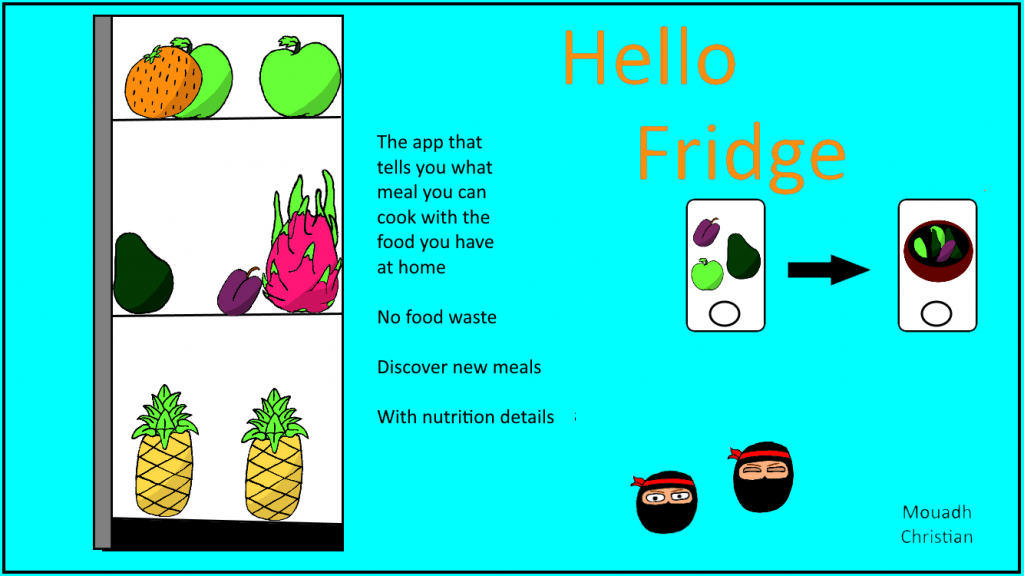
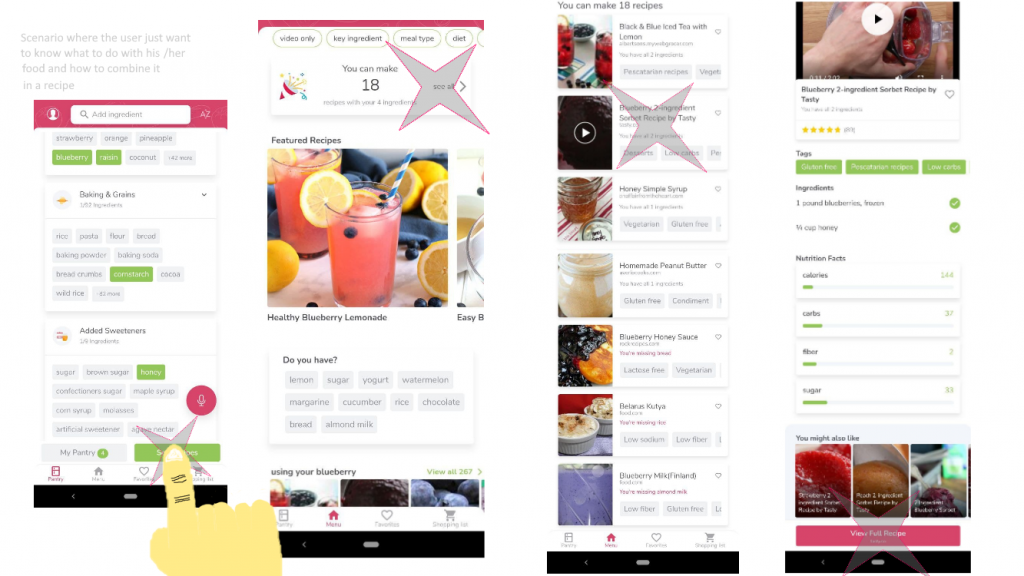
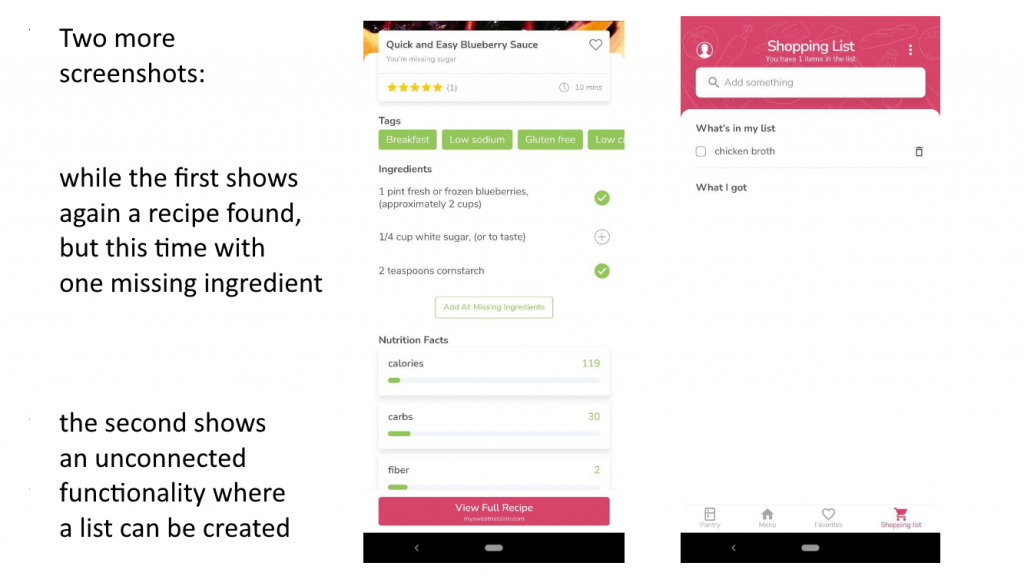
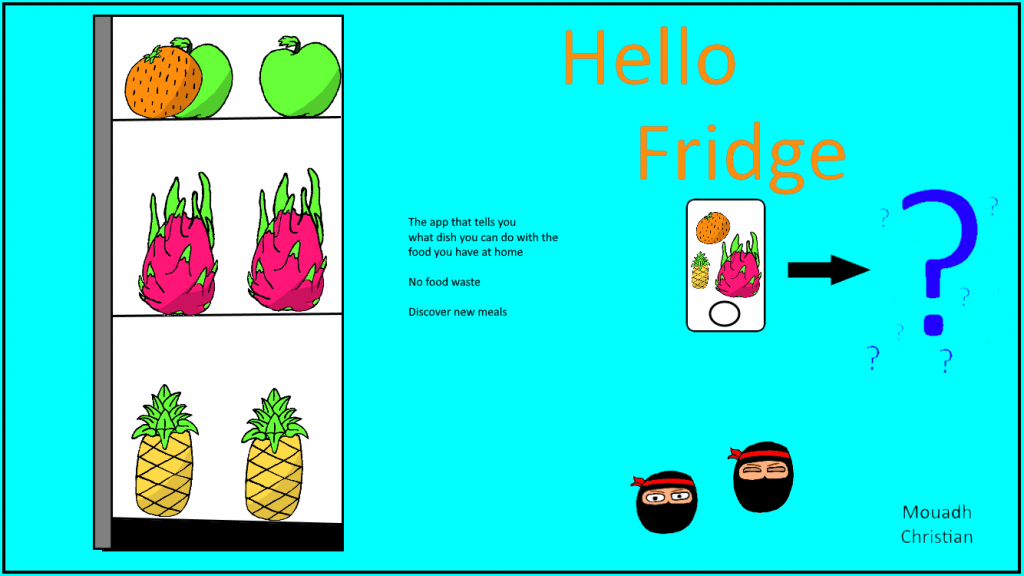
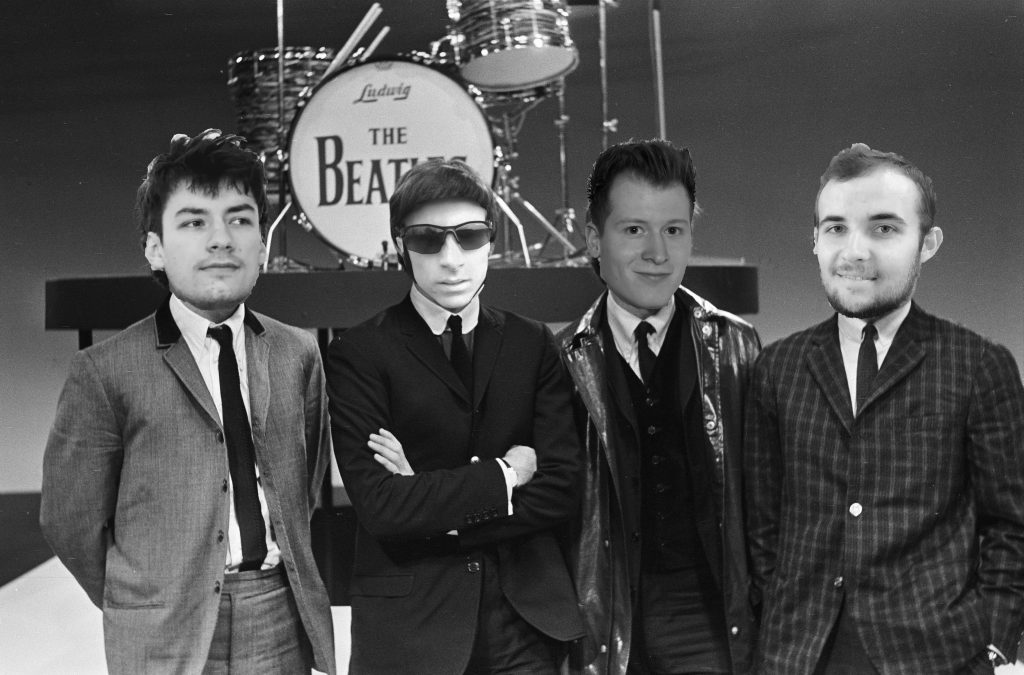
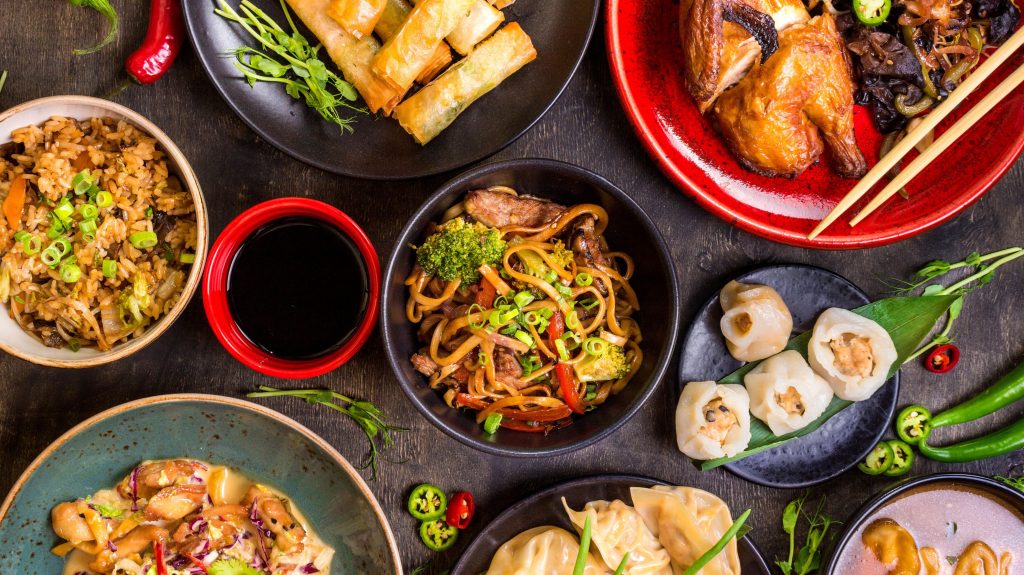
![[A#1, P4] JuurMates](https://blogs.fu-berlin.de/hci1-sose2021/files/2021/04/Unbenannt.png)
